Now, what is that?
An explorer’s guide to the flora and fauna of San Pedro Creek Culture Park
Depending on the season or the time of day, you could spot any or all of these plant and animal species as you make your way along the banks of the creek. Unless indicated otherwise, these species are native to San Antonio and South Texas, and their ancestors have called San Pedro Creek home for hundreds—even thousands—of years. Because of that, you could easily have the same kind of introduction to many of the creek’s natural treasures that the indigenous people and the Spanish explorers did.
The past is still present in many ways here. So stop often. Look around closely. And enjoy fully.
We ask all visitors to respect this special place and refrain from touching, chasing, teasing, and/or feeding the flora and fauna. Please have good manners and dispose of trash properly.
Shade Trees
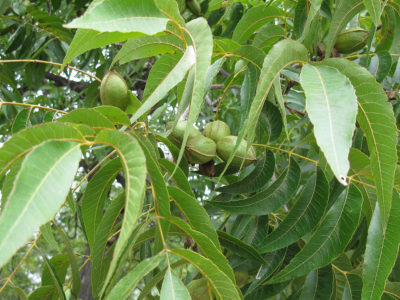
Pecan
Important as a larval host to pollinators like butterflies, this deciduous tree is a member of the hickory family. Their delicious, buttery nuts (actually a fruit) were eaten and traded by indigenous people living near the creek. The Spanish explorers first came in contact with them in the 16th century, and called them nuez de la arruga, which means “wrinkle nuts.” The Pecan tree is the State Tree of Texas. Exposure: full sun Height: 70-100 feet Fruit type: nut Fruit color: green, brown at maturity Texas native.
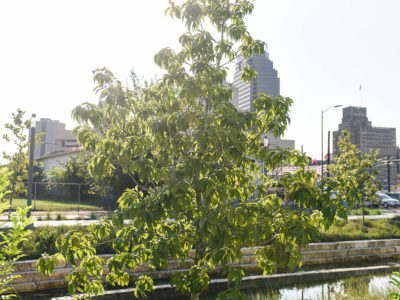
Chinquapin Oak
Important as a larval host to pollinators like butterflies. The acorns of this tree are especially known for being sweet and tasty. They provide an excellent source of nutrition for both wildlife and people.

Texas Red Oak
A medium to small tree, it looks especially beautiful in autumn, when its leaves turn bright shades of red and orange.
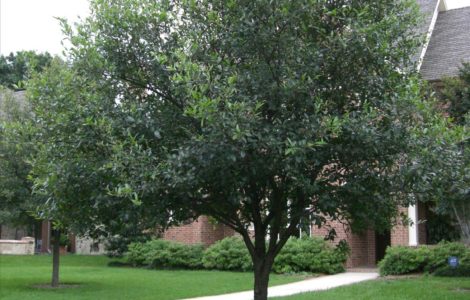
Live Oak
Important as a larval host to pollinators like butterflies. Although they retain leaves yearround, they are not actually evergreens. They drop their leaves only when new leaves form in the spring, so they never look bare. Indigenous people found ways to use all parts of the tree, including for food, dye, rugs, and medicine.
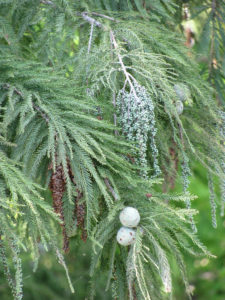
Bald Cypress
These are majestic trees that grow along creeks and rivers; they are slow-growing, can reach heights or 75 feet or taller, and are very long-lived. A deciduous conifer, the tree has a noticeable structure forming above the roots that are known as “cypress knees.” These might serve to aerate the tree’s roots—or possibly to provide support in flood-prone areas. Exposure: full sun, part shade Height: up to 70 feet Fruit type: cone Fruit color: green, brown at maturity Texas native
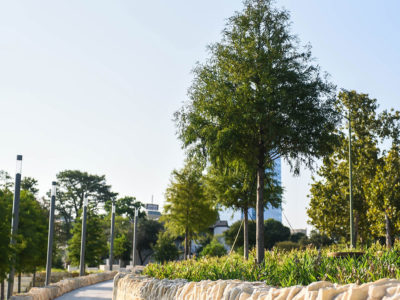
Montezuma Cypress
An evergreen, this tree also goes by the name of Aheuhuete. It’s fast-growing, and does not develop “knees.” It can get up to 70 feet tall with a trunk 6 feet in diameter or more.
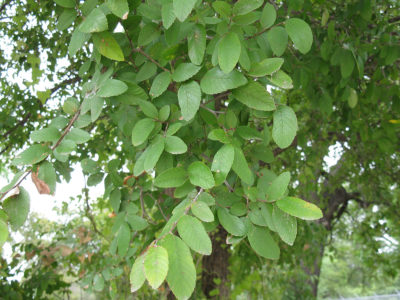
Cedar Elm
Important as a larval host for pollinators like butterflies. The twigs sometimes have thin “wings” and the leaves often turn red, orange, and gold in the autumn.
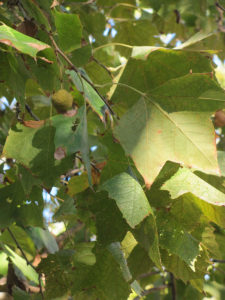
Mexican Sycamore
A deciduous tree that many have called a living work of art because of its beautiful bark; it gets even more beautiful and intricate as it ages. It can grow up to 80 feet tall if it’s in the right environment.
Ornamental Trees
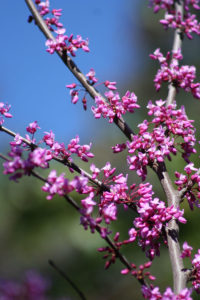
Texas Redbud
Important as a nectar host to pollinators like honeybees and butterflies. These small, deciduous trees are at their showiest in springtime, when their branches are totally covered with vivid, purplish-pink blossoms.

Desert Willow
Unlike most turtles, their shells are not hard and bony. Instead, they have leathery shells. Males can grow between 5- and -inches; females are smaller. They spend much of their time hiding in the gravel of river bottoms, but you might also see them soaking in the sun. They are one of the fastest-swimming turtles around.
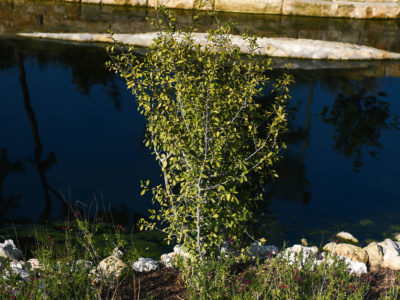
Possumhaw
A type of holly, this deciduous tree is very noticeable in winter, when female trees bear attractive clusters of small bright red berries. The berries are often eaten by birds and small mammals like raccoons and opossums.
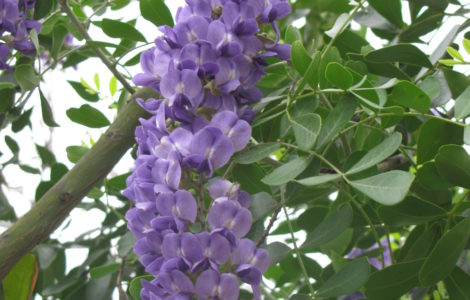
Texas Mountain Laurel
Important as a nectar host by pollinators like honeybees, this evergreen is especially noticeable in the spring when it blooms. The big, showy clusters of purple flowers are deeply fragrant; some describe it as being like an intense Concord Grape jelly smell.
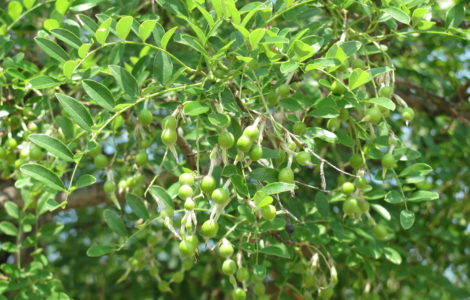
Eve's Necklace
This tree or shrub is especially beautiful in spring, when it has light green leaflets and fragrant flowers that are white tinged with rose. They look a little like wisteria blooms.
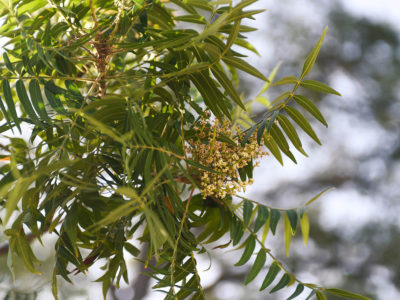
Prairie Flameleaf Sumac
This small deciduous tree tends to form a thicket and can grow 20 to 30 feet high. In summer, it has white blossoms; in autumn, it has pyramid-shaped clusters of red berry-like fruit.
Shrubs

American Beautyberry
This usually grows 3 to 5 feet tall, and about as wide—but it has been known to reach 9 feet in the right conditions. The name tells you what is most striking about It: the presence of clusters of glossy, iridescent purple-pink berries in the fall and winter. The seeds and berries are important food for many species of birds.
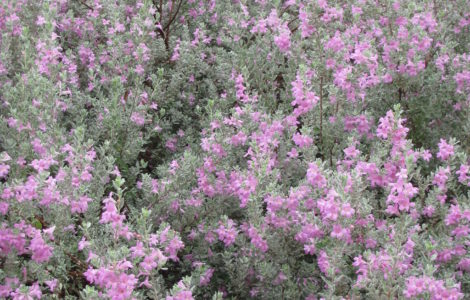
Compact Texas Sage
Important as larval and nectar host for pollinators like honeybees and butterflies. The silvery foliage and lavender pink blossoms are lovely. It is also called “the barometer bush” because it flowers after summer rains when the humidity is high.

Thunder Cloud Texas Sage
Important as a larval and nectar host for pollinators like honeybees and butterflies. Of all the Texas sage varieties, this one flowers the most. It grows to be 4 feet high and spreads out to about 4 feet.
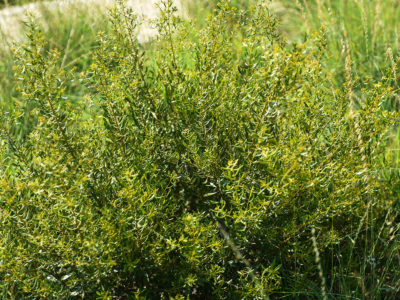
Dwarf Wax Myrtle
Important as a nectar host for pollinators like honeybees, butterflies, and hummingbirds. Its flowers are yellow and tan; they bloom during spring and winter. Its foliage has a fragrant bayberry scent. It forms thickets and colonies, so it’s good for erosion control.
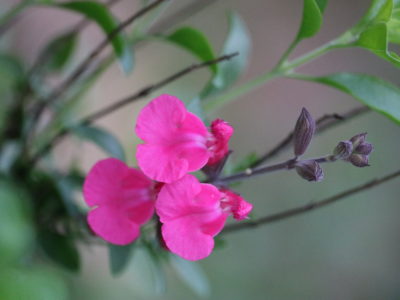
Autumn Sage
Important as a larval host for pollinators like butterflies and hummingbirds. It grows to about 2 to 3 feet tall. It flowers from spring to frost, and while they are usually red, they can also be pink, purple, orange, or white. The foliage has a minty, aromatic fragrance.

Esperanza
Also known as Yellow Bells, it can be anywhere from 3 feet tall to 9 feet tall. The abundant, bright yellow blooms are attention-grabbing. It’s greatly appreciated for its drought tolerance, too.
Vines
Ground Covers
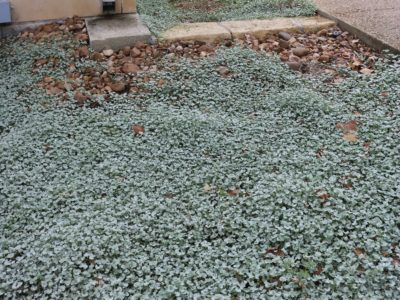
Silver Ponyfoot
A low-growing plant, its silver-gray foliage can look metallic in the sun. It can cover large areas like a dense, thick carpet, so it’s very useful in erosion control.
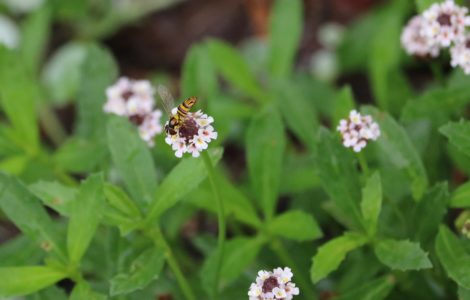
Frogfruit
Important as a larval host for pollinators like butterflies. It is evergreen in warm years, and in areas protected from frost. It rambles over boulders, and it can tolerate drought and flooding.
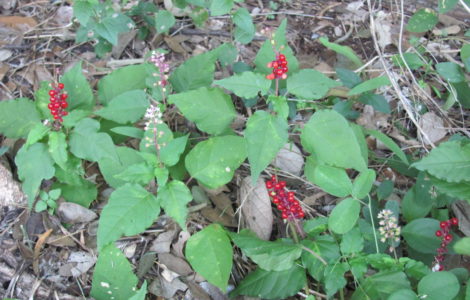
Pigeonberry
A perennial herb that generally grows to about 1 to 3 feet tall. It does well in the shade of trees and shrubs. It has pale pink blooms and bears scarlet fruit—sometimes simultaneously. The fruit is a favorite food of many birds.
Perennials
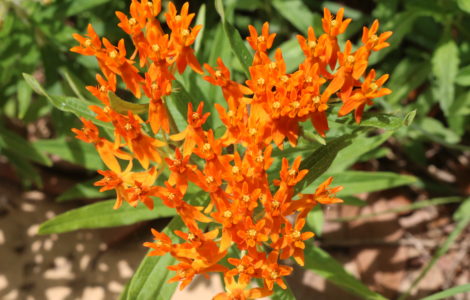
Butterfly Milkweed
Important as a larval and nectar host for pollinators like butterflies. A perennial, it has large clusters of bright orange or yellow flowers. Monarch butterflies cannot survive without Milkweed. Their caterpillars only eat milkweed and they need it to lay their eggs.

Turkscap
Important as a nectar host for pollinators like butterflies and honeybees. This is a spreading shrub and it grows 2 to 3 feet high and equally as wide; it can even reach 9 feet. The red flower is said to resemble a Turkish turban, hence the common name.
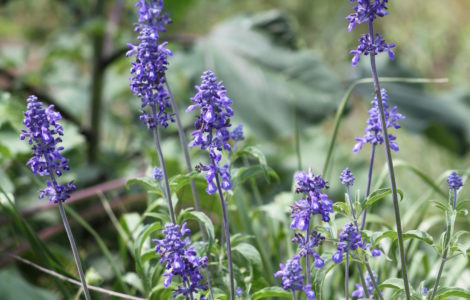
Mealy Blue Sage
This perennial forms a mound as wide as the plant is tall. The showy, colorful flowers have the fragrance of sage. It attracts butterflies and hummingbirds.

Cedar Sage
A perennial, it grows from 1 to 2 feet tall. It is adapted to grow in the shade. It has crimson blooms that are abundant in early spring; it continues to bloom lightly off and on throughout the summer.
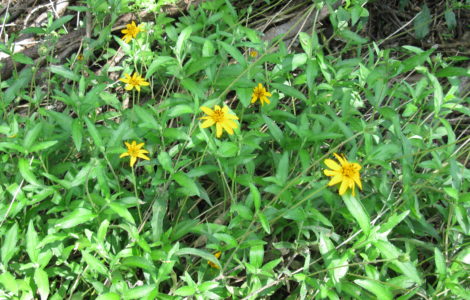
Zexmenia
Also known as Creeping-oxeye and Wedelia. It can be from 8 inches to 3 feet tall. The daisy-like orange flowers are small, but they get noticed because they cover the plant from summer to frost.
Agaves
Grasses

Sideoats Grama
This is a sod-forming grass with 2 to 3 foot stems. Small purplish spikes line one side of the stem. Birds love the ripe seeds of this grass. In nature, if its site is damaged by drought or grazing animals, it comes back stronger. It’s the State Grass of Texas.
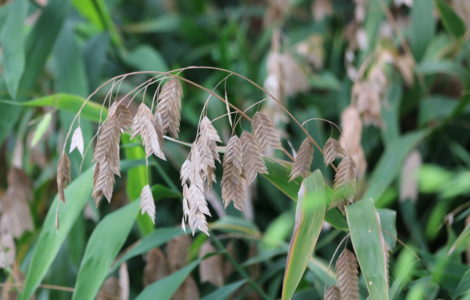
Inland Sea Oats
Important as a larval host to pollinators like butterflies. It’s a perennial clump-forming shade grass with large, graceful seed heads. It is often used to prevent soil erosion along streams.
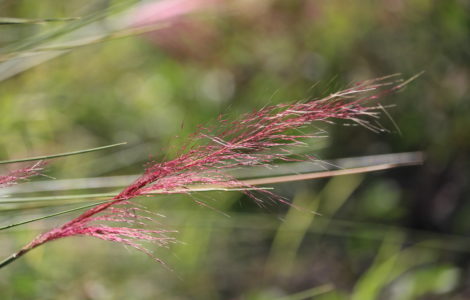
Gulf Muhly
A perennial grass with purple spikelets. In autumn, the plant takes on a feathery, deep pink color. It reaches 1 to 3 feet in height.

Lindheimer’s Muhly
A perennial grass with a fountain-like form. The seedheads are silvery. It is 2 to 5 feet tall. The species is named after the Father of Texas Botany.

Mexican Feather Grass
A perennial, it has delicate, thread-like leaves that move, wave, and shift in even a slight breeze.
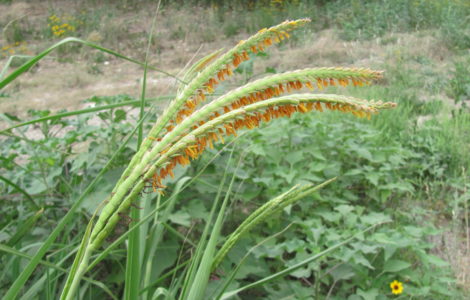
Eastern Gama Grass
Important as a larval host to pollinators like butterflies. This perennial is usually 2 to 3 feet in height, it can grow up to 10 feet tall. It has separate male and female flowers.

Little Bluestem
Important as a larval host to pollinators like butterflies, it’s an ornamental grass that forms mounds 18 to 24 inches in height. In the autumn, the blue-green stems become a mahogany-red with white seed tufts. The seeds are favorites of small birds.
Aquatic Plants

Horsetail
Look for the delicate, iridescent Dragonflies that love to perch on the tips of Horsetail.

Pickerelweed
Pickerelweed has showy purple flower spikes that are a favorite of many pollinators like butterflies and honeybees.
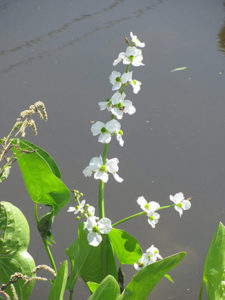
Arrowhead
Look closely at the shape of the leaves. Arrowhead got its name from their shape. Exposure: sun, part-shade Height: 1-3 feet Bloom color: white Bloom period: July-September Texas native.
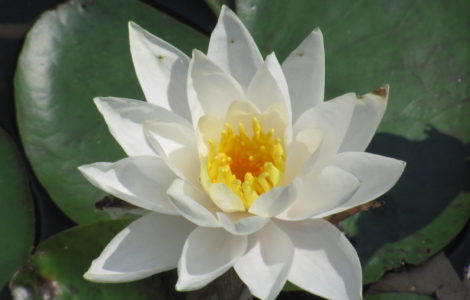
American White Water Lily
This floating plant has large, fragrant white or pink flowers and flat, round, floating leaves. The flowers open in the early morning and close around noon.
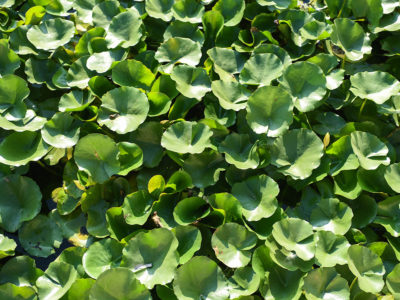
Yellow Water Lily
An aquatic plant with bright yellow flowers and floating leaves. The flowers open from around midday and close in late.
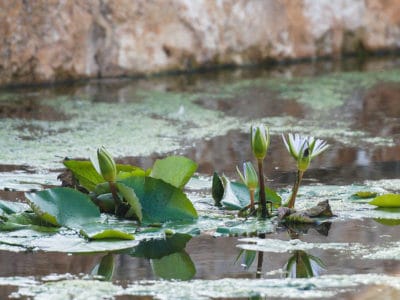
Blue Water Lily
A perennial, the blossoms are a delicate blue and the lily pads are freckled. The flowers generally open around 9:30 AM and close at about 3PM.
Birds
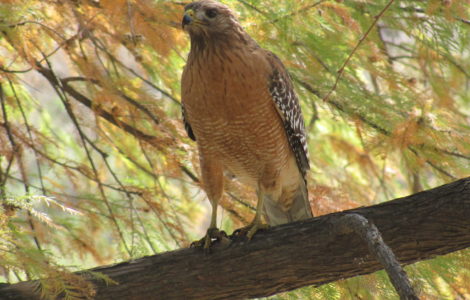
Red-shouldered Hawk
These are medium-sized raptors. They are good hunters and go after small prey like rodents. They have sharp eyes, broad wings, and long legs. When fully grown, they reach a length of 17- to 24-inches, with a 36- to 40-inch wingspans. Females tend to be larger than the males. They have reddish shoulders and a rust-colored breast with white and dark streaks. They are active during the day and sleep at night.
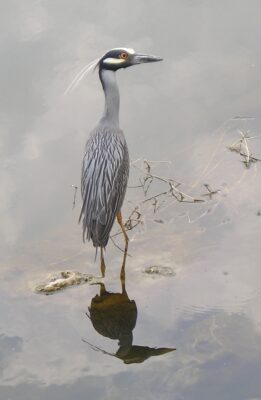
Yellow-crowned Night Heron
These large birds are predators that patiently watch from the creek banks—in search of food like crawfish or other prey. They mostly eat at night, but sometimes you’ll also see them during the day.

American Coot
Many people assume they are ducks—because they often associate with ducks. But look closely at the small head and little legs and you will see they’re a different kind of waterfowl. They rarely fly and they walk much like a chicken rather than waddle like a duck. Their diet is primarily aquatic plants.
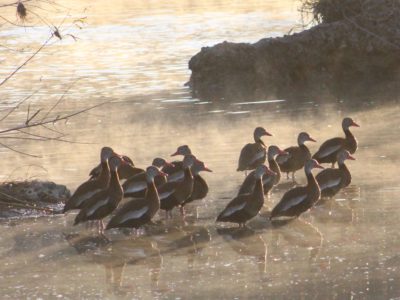
Black-bellied Whistling Duck
They are both migrants and residents in South Texas. They prefer to nest in an elevated site near water, but will also make a shallow bowl of dry grass in dense ground cover. They make a distinctive sound; there are videos online that capture it.

Snowy Egret
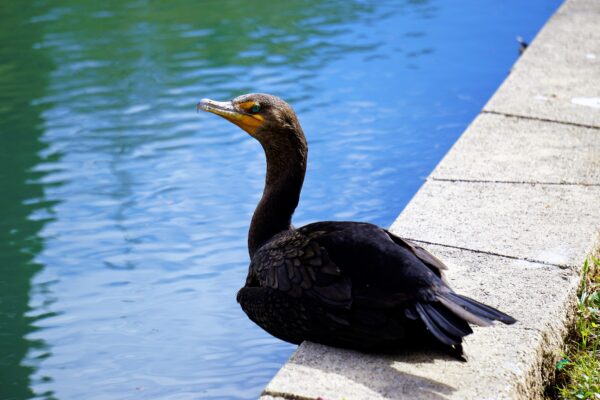
Tropical Cormorant
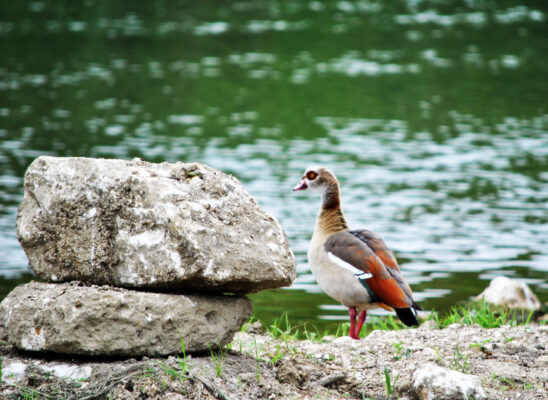
Egyptian Goose
*Invasive*
Reptiles & Amphibians
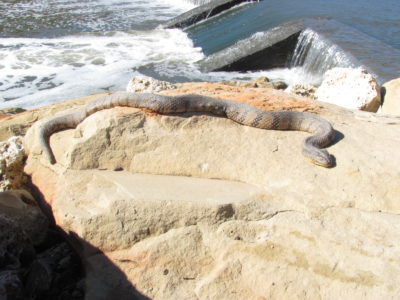
Diamondback Water Snake
Don’t be alarmed by the word “Diamondback” in its name. This is not a poisonous/venomous snake and is not the same thing as a Diamondback Rattlesnake. It is an extremely common species, and it is often misidentified as the poisonous “cottonmouth” or even the poisonous “water moccasin.” It is harmless, but because it tends to react badly when it feels under attack, it is often killed out of fear.
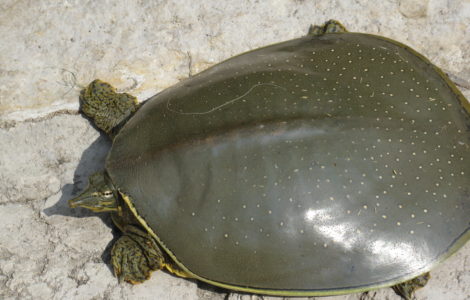
Spiny Softshell Turtle
Unlike most turtles, their shells are not hard and bony. Instead, they have leathery shells. Males can grow between 5- and -inches; females are smaller. They spend much of their time hiding in the gravel of river bottoms, but you might also see them soaking in the sun. They are one of the fastest-swimming turtles around.
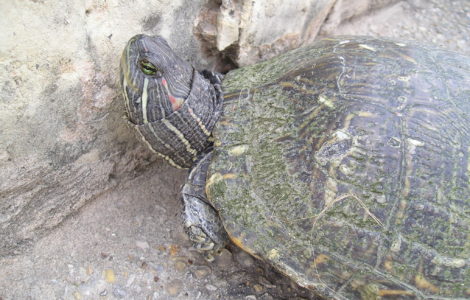
Red-eared Slider
These are probably the best known of all turtles, and the most common aquatic turtle in Texas. They get their common name from a broad red stripe behind their eyes, and how they slide off rocks and logs when startled. Some of them live more than 30 years. Look for groups of them sunning themselves. If there’s not enough space in the sun, they will often stack themselves on top of each other. They eat aquatic plants, small fish, and decaying material.
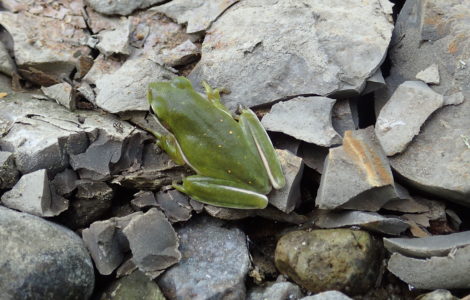
Green Tree Frog
These are 1-1/4 to 2-1/2 inches long. Its color may vary depending on temperature and activity. It has long toes with big, sticky toe pads that help it cling to plants. It likes spots with dense ground cover and aquatic vegetation. It often sleeps during the day and can be found looking for insects at night.

Northern Cricket Frog
They are small, warty frogs with variable colors and patterns. They are commonly found along the edges of lakes and slow-moving streams. They prefer open, shallow water with plenty of vegetation. They do not have toe pads, so they don’t climb well and are not found in trees.

Gulf Coast Toad
Like most toads, it is a carnivore and will eat anything that it is able to overpower and swallow. They prefer being near a permanent water source, which they use for breeding in the spring. However, they also can travel long distances while looking for food.

Rio Grande Leopard Frog
They can reach a size of almost 4-inches as an adult. They are nocturnal and burrow to avoid the heat of the sun. They eat insects—and anything smaller than themselves. They can be found in arid areas—as long as there are creeks, streams, or even cattle irrigation tanks nearby.
Mussels, Clams and Crawfish
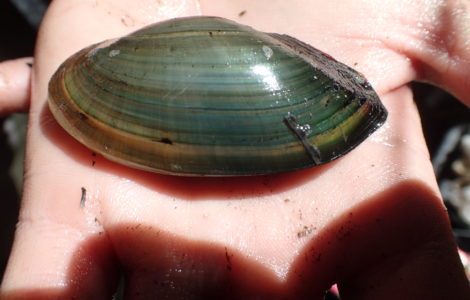
Paper Pondshell Mussel
They are medium-sized—about 4.5-inches, and very thin-shelled. They prefer soft mud or sand substrates.

Asian Clam
They are non-native and are considered to be an unwanted invasive species. They reproduce in large colonies that can clog waterways and pipes.
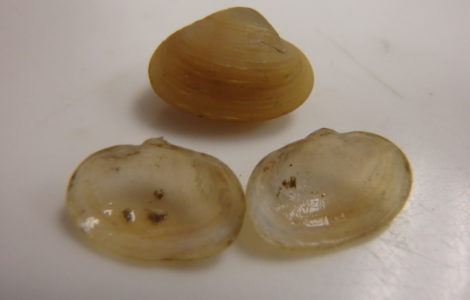
Fingernail Clam
These are very small—literally no bigger in length or width than a small child’s fingernail. They prefer freshwater lakes and slow-moving rivers.

Crawfish
Fish

Blue Tilapia
They are non-native and considered to be an unwanted, invasive species and are prohibited in Texas. They can diminish native plant, fish and mussels in bodies of Texas freshwater. Even though they’re tropical fish, they can survive in cold temperatures and even in brackish water. Chemical treatment is not efficient for controlling the population because of the effect it would have on vegetation and native species of invertebrates.
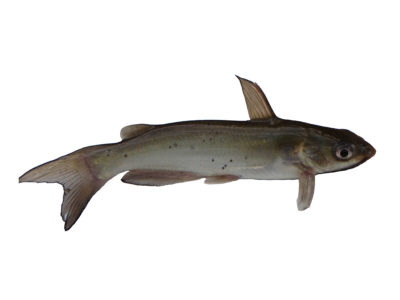
Channel Catfish
Also known as Willow Cat, Forked-Tail Cat, Fiddler, Spotted Cat, and Lady Cat, they can be recognized by their deeply forked tail fin. They are omnivorous. They can reach up to 12-inches in length at maturity.
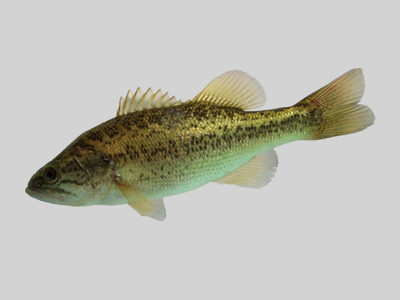
Largemouth Bass
These are prized as game fish. They are also the top predators in the aquatic ecosystem. They can grow as long as 16 inches in just 3 years. They feed primarily on other fish (including their own species) and large invertebrates like crawfish. Adults are usually solitary. They hide among plants, roots, logs, rock ledges, and limbs in order to ambush their prey. They prefer clear, quiet water but survive well in a variety of habitats.
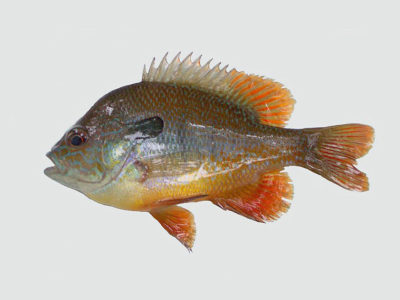
Longear Sunfish
Also known as the Cherry Bream, they are found in creeks and streams near and in vegetation. They avoid strong currents by inhabiting pools, inlets, and waters off the main stream channel. They rarely exceed 6-inches in length.
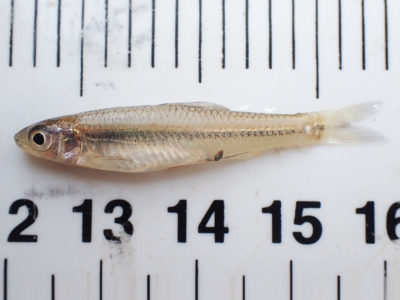
Mimic Shiner
This is what is known as an “intolerant” species. It has also been seen in the Museum Reach, River Walk, and Mission Reach. Intolerant species cannot live in poor quality water. They require a higher quality of water than other types of fish, so their presence is an indicator of good ecological function in the water.
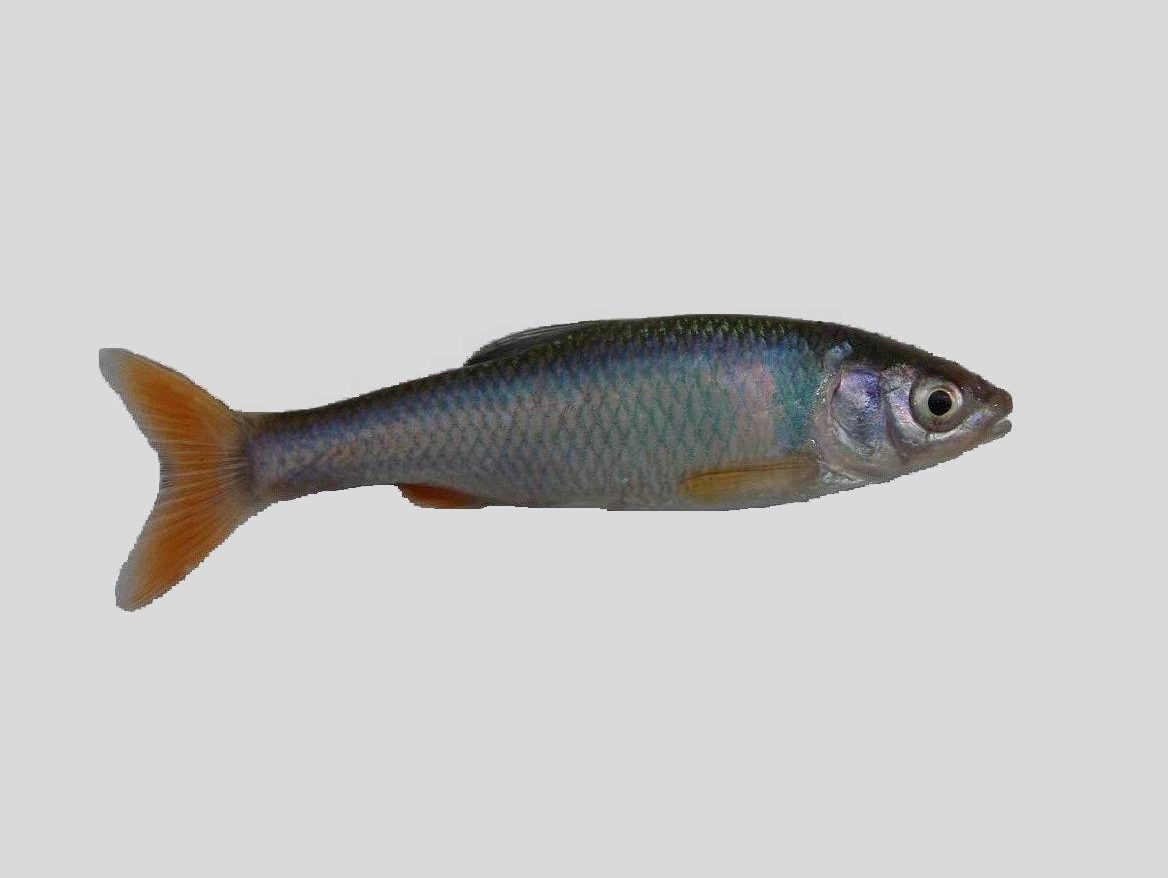
Red Shiner
Also known as the Red-horse Minnow, their maximum size is about 3.5-inches. They are thought to feed primarily on small invertebrates.
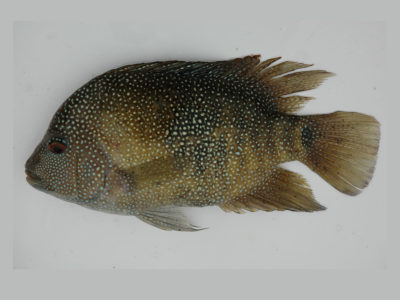
Rio Grande Cichlid
Also known as Rio Grand Perch, these fish may grow to exceed 10-inches in length. Generally considered to be warm-water fish, they are very sensitive to cold, and do well in spring-fed waters with constant favorable temperatures.

Sailfin Molly
It’s obvious how these fish got their name, once you see their prominent sailfins. They are not a native species; they were introduced, probably through aquarium releases. They generally inhabit shallow, slow-moving water where aquatic vegetation is abundant. They tolerate wide ranges of temperature, salinity, and low oxygen levels. They are not particularly welcome because they are thought to impact native species negatively.

Suckermouth Catfish
They are non-native and considered to be an unwanted, invasive species. They are mostly nocturnal feeders; they have an obvious sucker located on the head. They can range in size from 3-inches to over 3-feet. They can out-compete native fish for food. They primarily eat algae. They were found in the San Antonio River in 2000.

Western Mosquitofish
This is possibly the most abundant freshwater fish in the world. They are known to feed on mosquitoes, and are valued because of their diet. These fish tend to be in shallow water with abundant vegetation. It is also where other predatory fish are usually absent and the water temperatures are warmer. They are more tolerant of pollution than other species of fish.
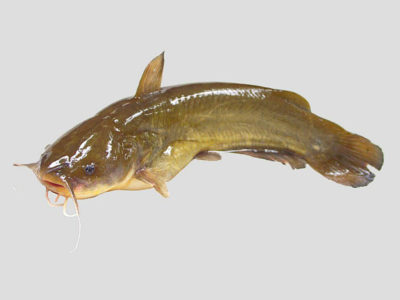
Yellow Bullhead
Also known as the Mudcat, Polliwog, and Chucklehead Cat, these fish excavate nests in mud bottoms and spawn. They are omnivorous. They usually weigh less than 4 pounds.
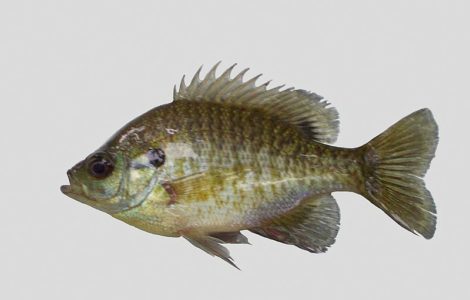
Bluegill
Also known as Bream, Brim, Perch Sunfish, and Sunperch, these fish feed primarily on aquatic insects and their larvae. Their nests are created in shallow water, 1- to 2- feet in depth. Fifty or more nests may be in a small area.
Some photos pending while the native species continue to make San Pedro Creek Culture Park their home.


